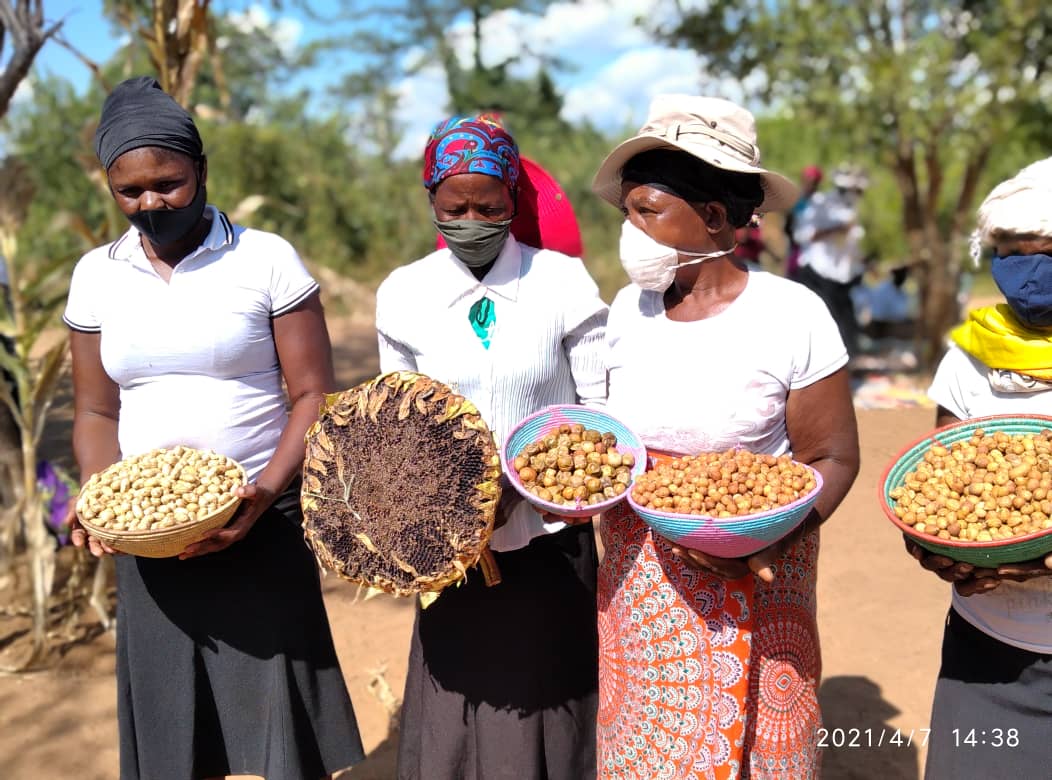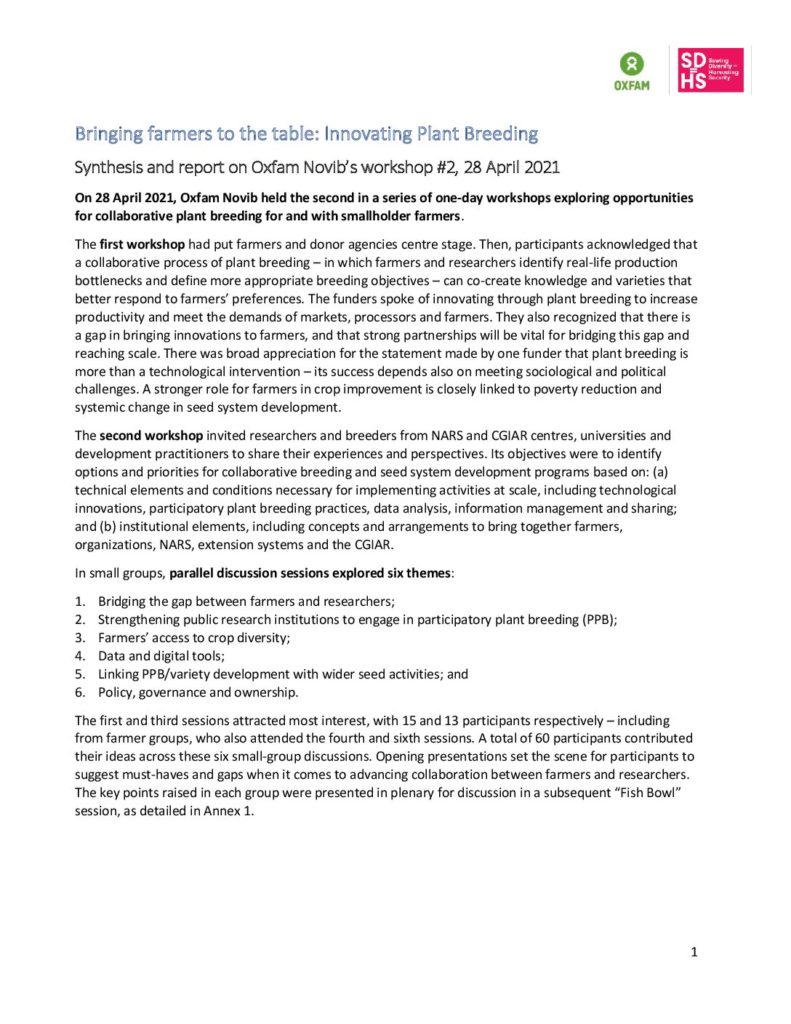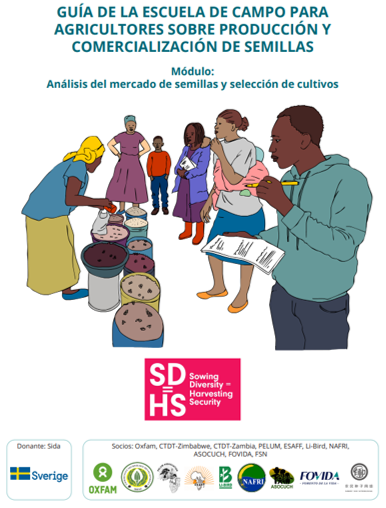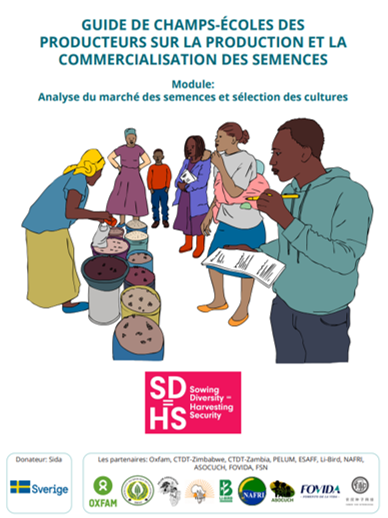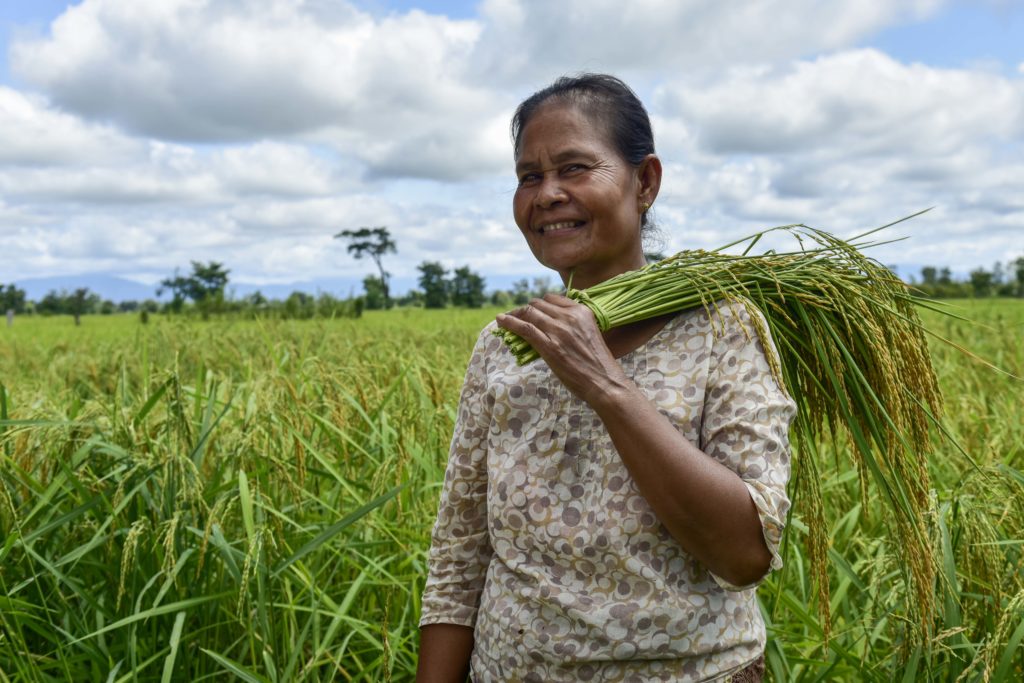On 28 April 2021, Oxfam Novib held the second in a series of one-day workshops exploring opportunities for collaborative plant breeding for and with smallholder farmers.
The first workshop had put farmers and donor agencies centre stage. Then, participants acknowledged that a collaborative process of plant breeding – in which farmers and researchers identify real-life production bottlenecks and define more appropriate breeding objectives – can co-create knowledge and varieties that better respond to farmers’ preferences. The funders spoke of innovating through plant breeding to increase productivity and meet the demands of markets, processors and farmers. They also recognized that there is a gap in bringing innovations to farmers, and that strong partnerships will be vital for bridging this gap and reaching scale. There was broad appreciation for the statement made by one funder that plant breeding is more than a technological intervention – its success depends also on meeting sociological and political challenges. A stronger role for farmers in crop improvement is closely linked to poverty reduction and systemic change in seed system development.
The second workshop invited researchers and breeders from NARS and CGIAR centres, universities and development practitioners to share their experiences and perspectives. Its objectives were to identify options and priorities for collaborative breeding and seed system development programs based on: (a) technical elements and conditions necessary for implementing activities at scale, including technological innovations, participatory plant breeding practices, data analysis, information management and sharing; and (b) institutional elements, including concepts and arrangements to bring together farmers, organizations, NARS, extension systems and the CGIAR.
In small groups, parallel discussion sessions explored six themes:
- Bridging the gap between farmers and researchers;
- Strengthening public research institutions to engage in participatory plant breeding (PPB);
- Farmers’ access to crop diversity;
- Data and digital tools;
- Linking PPB/variety development with wider seed activities; and
- Policy, governance and ownership.
The first and third sessions attracted most interest, with 15 and 13 participants respectively – including from farmer groups, who also attended the fourth and sixth sessions. A total of 60 participants contributed their ideas across these six small-group discussions. Opening presentations set the scene for participants to suggest must-haves and gaps when it comes to advancing collaboration between farmers and researchers. The key points raised in each group were presented in plenary for discussion in a subsequent “Fish Bowl” session, as detailed in Annex 1.
Key opportunities for joint action – synthesized from Workshop 2 discussions
The seven points below distil the numerous and diverse opportunities suggested during the discussions for “bringing farmers to the table”.
- Strengthen the capacities of farmers, researchers and their organizations to jointly plan, implement and monitor collaborative breeding activities through dedicated education and training programs.
- Strengthen shared ownership of the breeding process and its products, with farmers contributing to and having a voice in: setting breeding objectives and targets; evaluating and identifying genetic heterogeneous or segregating materials while diversity is available for selection; and evaluating and choosing more ‘finished’ genetic materials to advance and disseminate.
- Explicitly focus on gender equity and empowerment of smallholder farmers, the poor, women and youth members of farmer organizations by attending to their roles and responsibilities in joint breeding and seed dissemination activities, not as ‘beneficiaries’ but as partners of researchers.
- Create and facilitate the use of tools, methods and software for collecting and using information and data generated through collaborative activities for:
– farmers and researchers to query and analyse it, reconciling top-down and bottom-up information by linking data from individual field conditions and separate farmer organizations for joint analysis of and access to results;
– sharing farmer-pertinent varietal and seed information more widely, in ways that are accessible to smallholder farmers, women and youth; and
– ensuring representation of and responsiveness to diverse users within and across different communities. - Respond to farmers’ desire for access to novel germplasm and diversity of varietal options by linking farmer groups and organizations that are specialized in seed production and/or breeding and selection activities with breeders and gene bank curators who are keen for innovative and adapted germplasm to reach farmers.
- Explicitly target farmers’ access to varietal diversity for better resilience and agro-biodiversity by:
– Enabling farmers to give input into modifying or elaborating seed policy and regulations to facilitate dissemination of newly (co-)developed varieties, landraces with intra-varietal diversity, etc.;
– Strengthening farmers’ awareness of their rights, and implementing the International Treaty on Plant Genetic Resources for Food and Agriculture; and
– Contributing to the development of the Convention on Biological Diversity’s post-2020 Biodiversity Framework. - Link participatory breeding with seed production and dissemination: identify, document and scale up models or cases in which the initial ‘10 grams of seed’ of a newly bred variety leads to tons of seed being accessible to and cultivated by smallholder farmers.
For more information, please contact: Anita.dohar@oxfamnovib.nl and Frederik.vanoudenhoven@oxfamnovib.nl
SD=HS Program: https://sdhsprogram.org/

